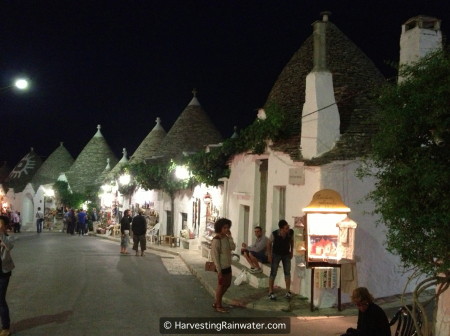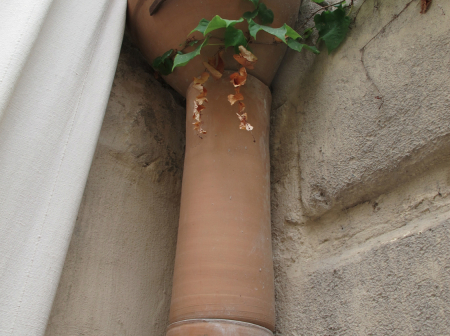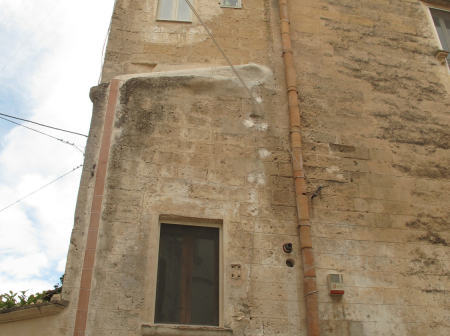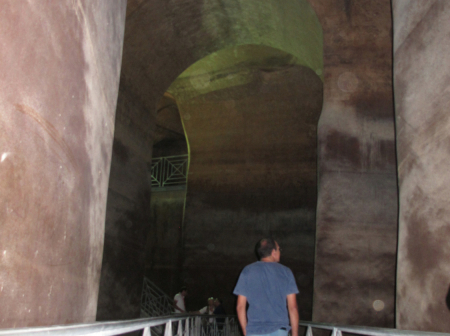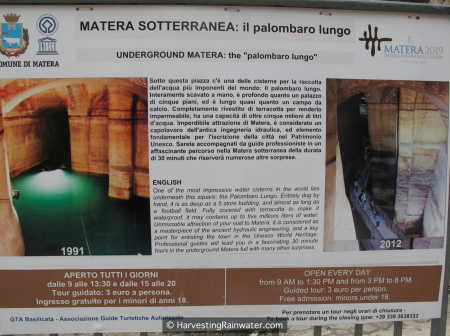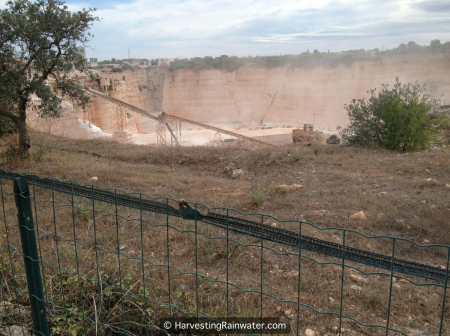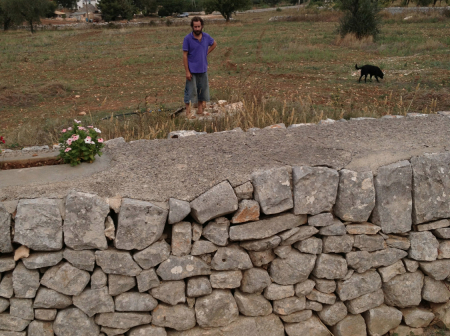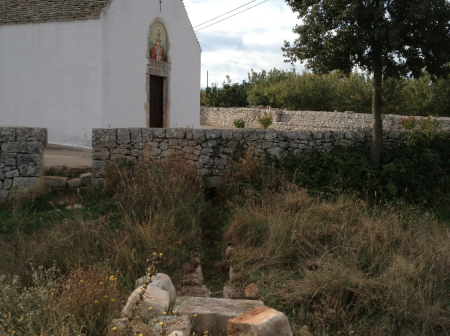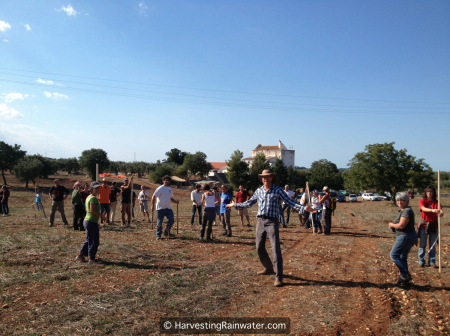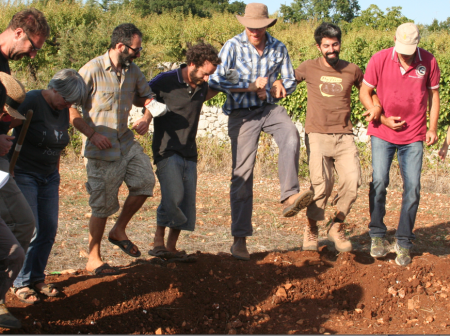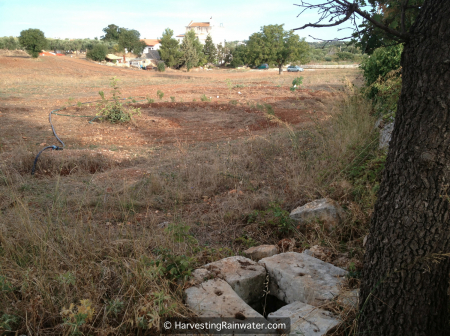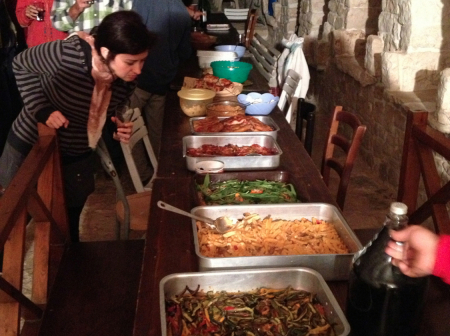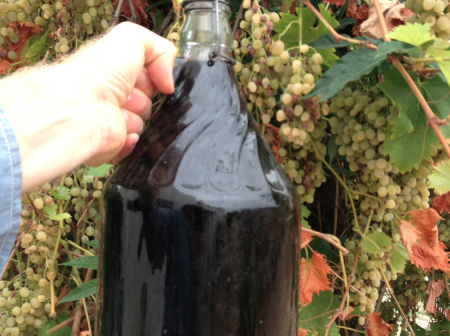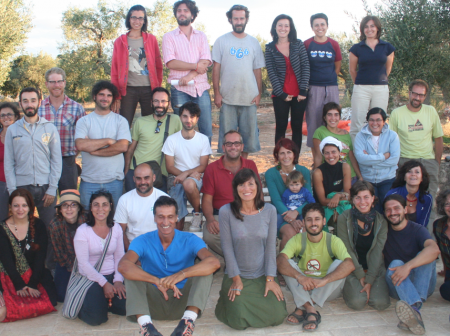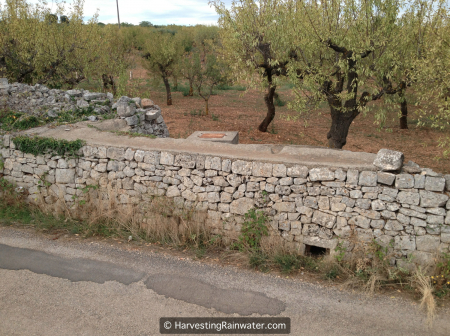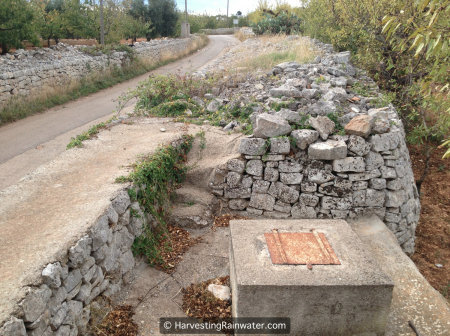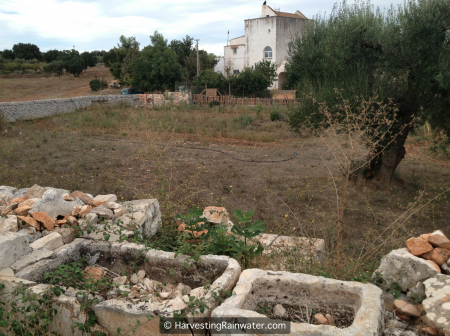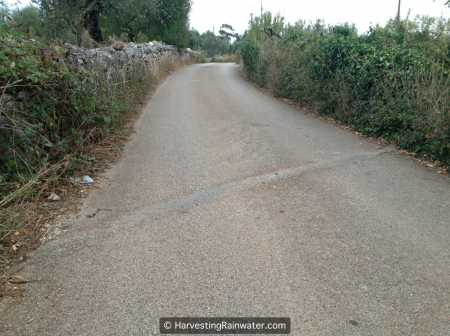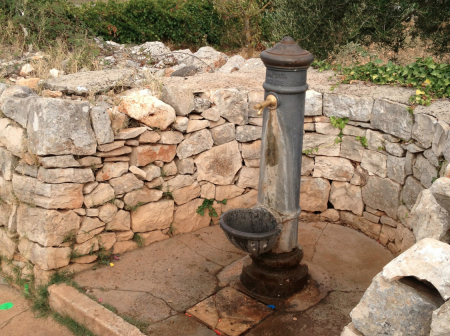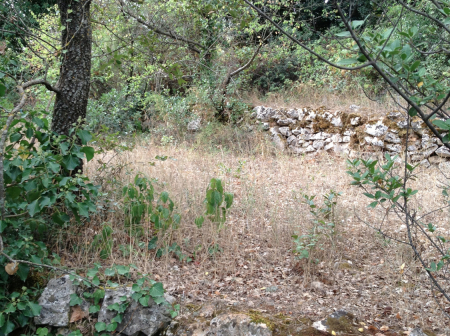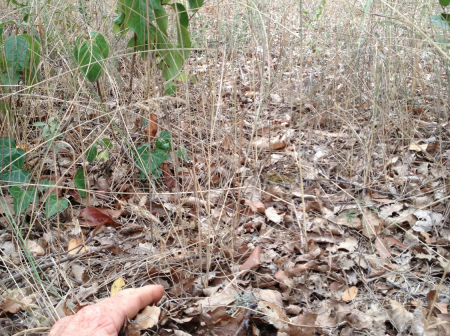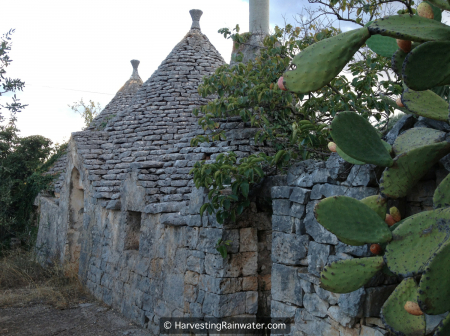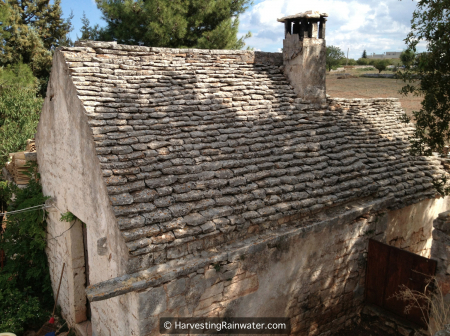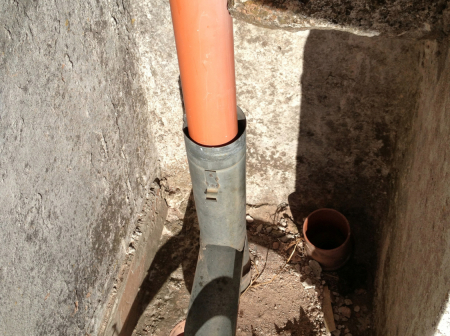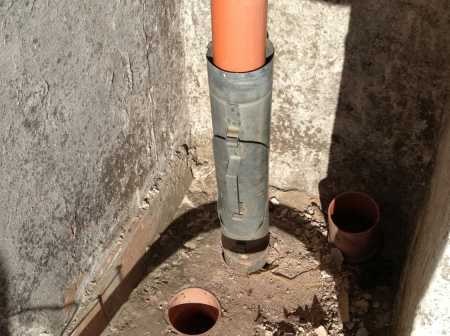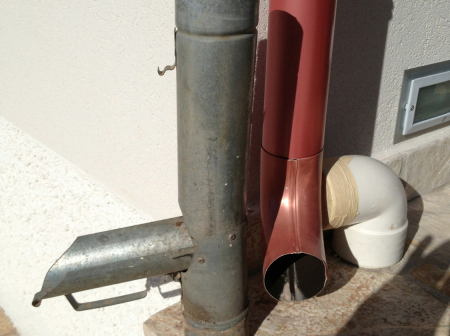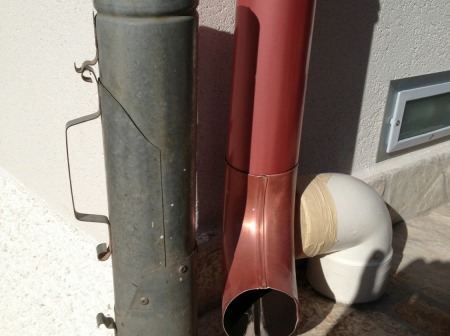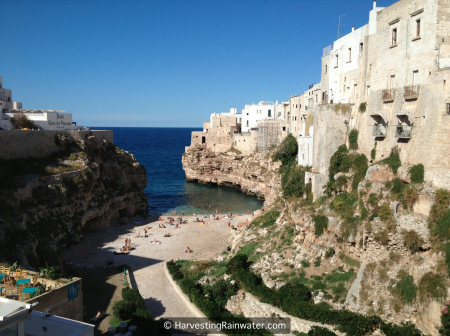Rainwater Harvesting in Puglia, Italy
by Brad Lancaster © 2013
www.HarvestingRainwater.com
This past September I had the great pleasure of teaching (and learning more about) ancient and modern water and sun harvesting in the Puglia region of southern Italy. Flying in, I saw perennial food-producing solar-power systems everywhere in the form of olive, almond, apricot, peach, loquat, apple, quince, fig, pomegranate, walnut, chestnut, pine, and oak trees: living abundance planted among water- and soil-harvesting terraces. But occasionally swaths of the trees were clearcut for large arrays of manufactured solar panels, while the rooftops of adjacent farmhouses and outbuildings were devoid of such panels.
This wrong was made right on the farm where I taught outside of Castellana Grotte (click here to download One-Page Place Assessment for Castellana Grotte). There, solar panels and a solar water heater adorned the tile roof of the ancient stone farmhouse oriented with its long wall facing south to maximize passive winter heating and summer shading/cooling—uniting old and new, while the rest of the land was reserved for food-bearing photosynthesis.
Beneath the building was a rainwater cistern carved into the limestone bedrock. The excavation of the rock provided stone for the building. This was the traditional norm for the region.
Up until as recently as about 30 years ago, every house collected rainwater, and farm-road runoff was directed to roadside cisterns and plantings. Even whole towns and cities harvested their rainfall. For example, up until 1927 the city of Matera harvested runoff from its surface in massive cisterns below the city, though this water-harvesting practice began to falter when water from Italy’s wetter and distant west coast was piped and pumped to the drier east coast where Puglia is located. But this imported water is costly.
Surface water is a rarity in this dryland, due in part to how quickly water infiltrates the limestone substrate. Groundwater is often very deep. In some areas you need to drill 800 meters before hitting the groundwater table. The cost of pumping that water keeps increasing along with energy costs, thus a cubic meter of local well water often costs 1 Euro, and overpumping of that groundwater can lead to seawater intrusion into the aquifer.
Summers are dry in this Mediterranean climate, but the winters are wet enough that it is typical for more rain to fall on a community in a year here than all the municipal water consumed by its citizens in a year. Thus there is a rich tradition of capturing water from the wet season for use in the dry season. Some, such as my hosts, are reviving these traditions.
My hosts cleaned out the ancient cisterns along their farm road, and then cleaned out the channels that direct the road runoff to the cisterns. This harvested water is then used to irrigate orchards and gardens, and will also be used for supplemental irrigation of more plantings yet to come.
During the workshop everyone got practice using a water level to determine slope and where to place water-harvesting earthworks. We then built boomerang berms for new plantings (such as chestnuts, figs, pomegranates, and perennial herbs) to capture rainfall and overflow runoff from one of the roadside cisterns. Eventually, a number of the trees will help shade the road and roadside stone walls, reducing their heat-island effect and the associated increase in evaporative loss of soil moisture. The nearby cistern will also provide supplemental irrigation for the trees in the dry season.
Water-holding capacity of the soil, along with fertility, is enhanced with the application of mulch, compost, and humanure from the site’s composting toilet.
The compost toilet was well used after the consumption of so many mouth-watering locally-grown and -made foods served during the course. The local-food movement is alive and well in Puglia, and now the locally-harvested water movement has started to be revived.
To that I will make a toast—with a glass of the local home-grown and -pressed wine—in order to deeply thank my hosts, students, and teachers in Italy for their incredible hospitality, kindness, music, laughter, and passion. Harvest the waters, nourish the soils, grow the foods, and share the knowledge to spread the regenerative abundance!
For more on how you can harvest and regenerate your bounty of local on-site water, sun, wind, shade, and community…
See the new, full-color, revised editions of Brad’s award-winning books
– available a deep discount, direct from Brad:

Volume 1


